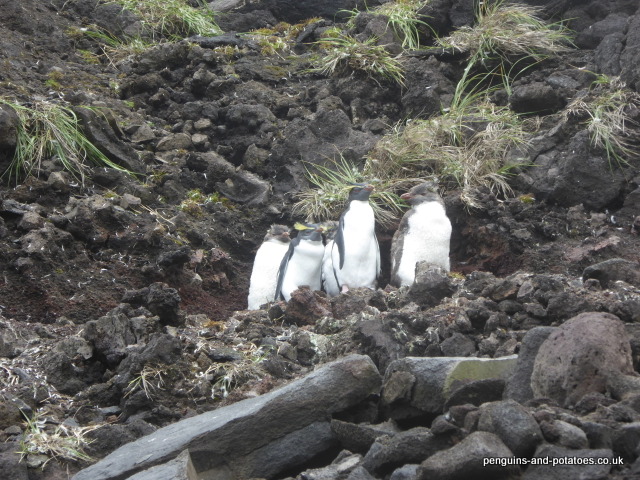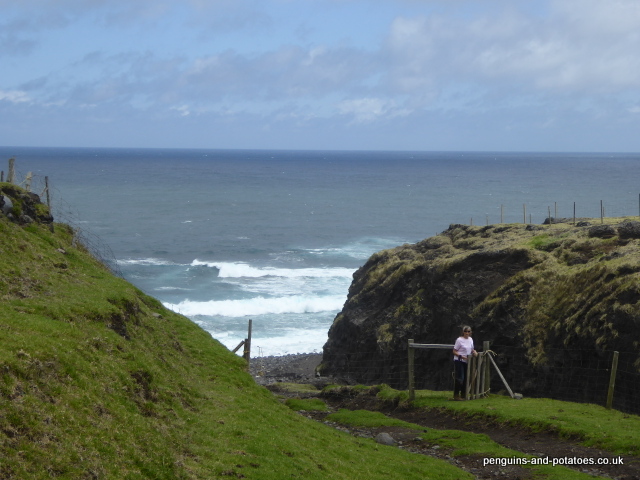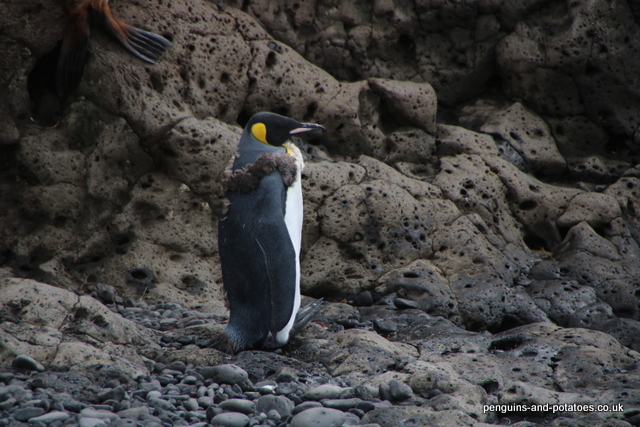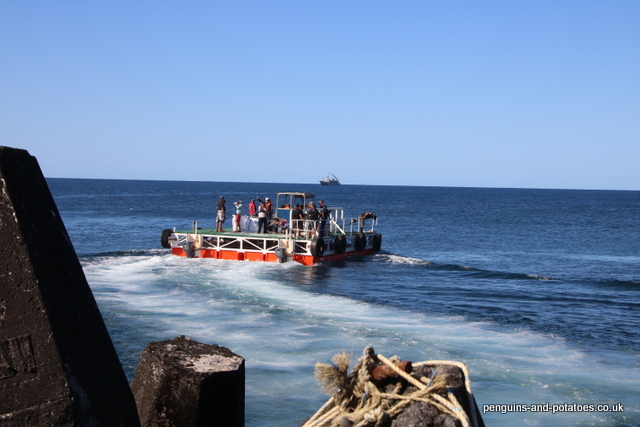Every year, normally in February, the island holds Queen’s Day. This is rather like a combination of Village Fete, Highland Games, and Barbecue / Party. Sometimes it is difficult to find a suitable day for the event, because it falls at a time of year when a Fishing Day could be declared – or if a ship is in the weather could be suitable for an Unloading Day. Queen’s Day is normally held on a Friday, which leaves people free to ‘do their own thing’ during the weekend. If the decision is made to hold the day on a Saturday, then the following Monday is declared a public holiday instead. Clearly, it is important for people to be given time to ‘do their own thing’.
Everyone knows beforehand that the day is to be Queen’s Day, but tradition dictates that this is confirmed around 7.30 in the morning by the Chief Islander ringing the gong. This year, on February 24th, we heard the gong. The big day has started!
Different events are organised by different Departments. For example, the fishing competition is appropriately enough organised by the Fisheries Department.
The event is held in St. Mary’s School, and in American Fence which is just to the north of the school. On Tristan the word ‘fence’ can mean two things. It can mean a livestock barrier made of posts and wire, or it can mean ‘field’, all depending on the context. Hence, for example, you may have ‘the fence down the side of Hottentot Point Fence’. Simple really.
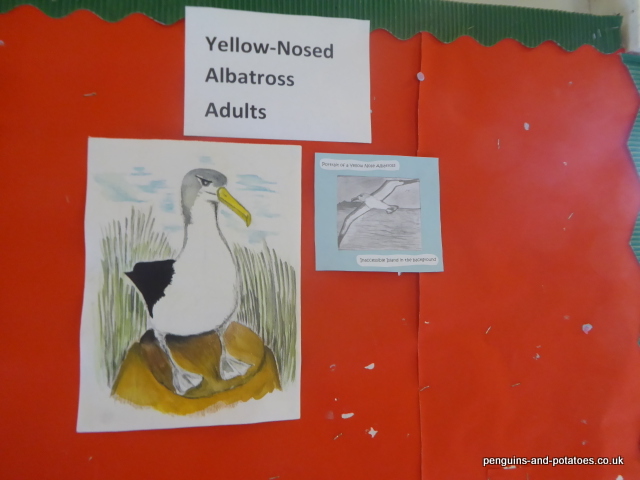
Most of the expats are charged with being judges in the Art, Produce and Vegetable events. For some reason I was in the team judging garden produce and flowers. Behind closed doors our little team had to judge entries such as funniest potato, best three carrots, and best wild flower arrangement, while other teams were tasked with judging the Swiss rolls, the children’s art, and the portraits of a Yellow Nosed Albatross.
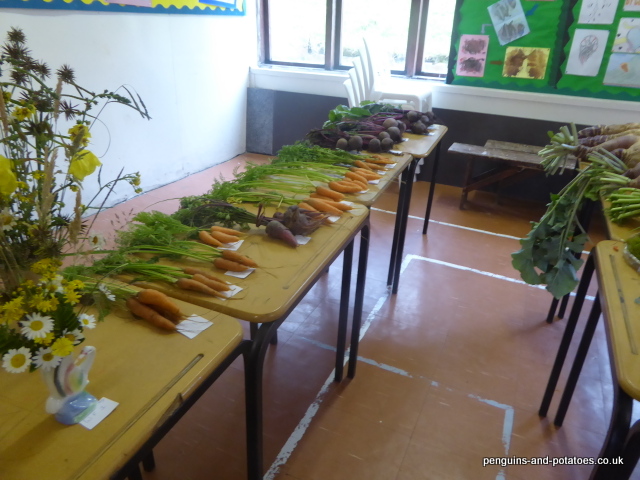
Outside, the day was warming up and participants and spectators were gathering. Jonathan, from the Public Works Department, set up the air rifle shooting competition, with targets at 20 metres. It was a fun event taken seriously! It was not easy with just three shots, no sighting shots, using air rifles that could have their sights out of adjustment, aiming towards the sun with clouds casting moving patterns on the sea behind the targets, but at least it was the same for all!
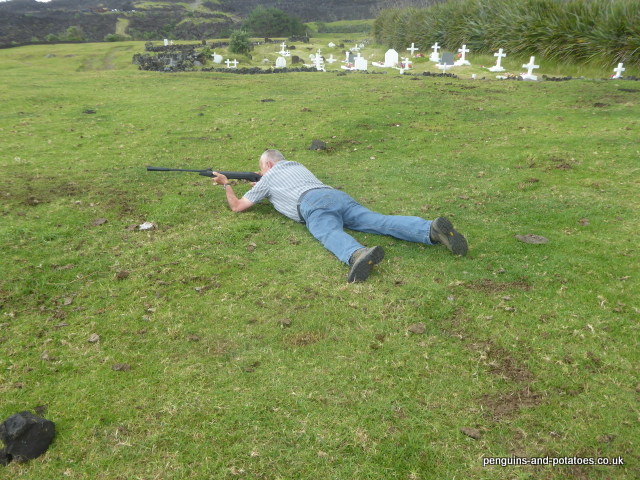
For the numbers of spectators watching from the benches beside the school wall, one of the most entertaining events was the ‘wibbly wobbly’ race. Against the clock, competitors had to drink a glass of beer, run to a stick planted in the ground where with hand on stick and head on hand they had to do 10 dizzy-inducing circles around the stick, then they had to kick a football into a goal. Sounds simple, perhaps – but the results were really entertaining. I am sure it was the rotating around the stick that induced the dizziness, and not the beer, but you could not imagine anyone kicking a ball showing such total leglessness.
The races around the cemetery (ladies and gents) were astonishing, if only for the breakneck speed with which the men headed down the hill from the start.
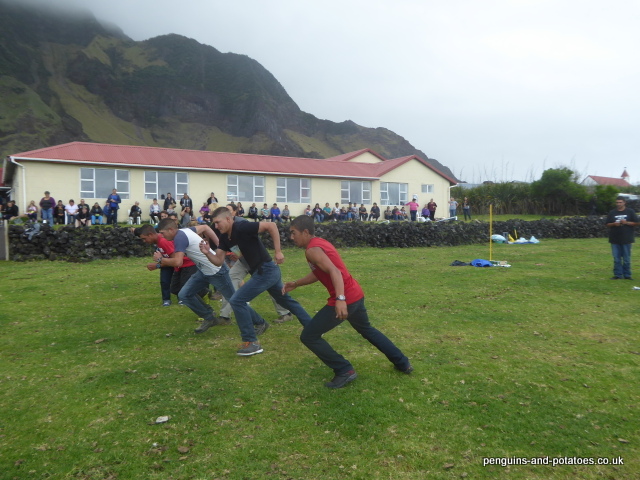
As the day wore on, folk drifted away, so that they could take a bit of time out before heading up to the braii (barbecue). Preparations for this were made the day before, with two athletic young men going up to the Base to harvest some mutton. Fires were lit, drinks were served, and a good level of mellowness was achieved before one of the main events of the day – the Wheelbarrow Race. The pictures tell it all! The timing of this event was important, in that competitors were sufficiently relaxed to be able to avoid injury if they fell, without being so relaxed that falls were inevitable!
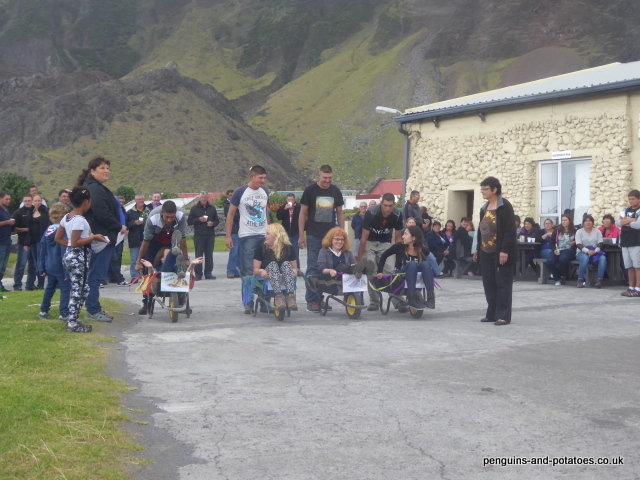
The braii itself was memorable, with a team of people (largely from the Agriculture Department) looking after the barbecue, and queues inside the Prince Philip Hall as folk filled their plates.
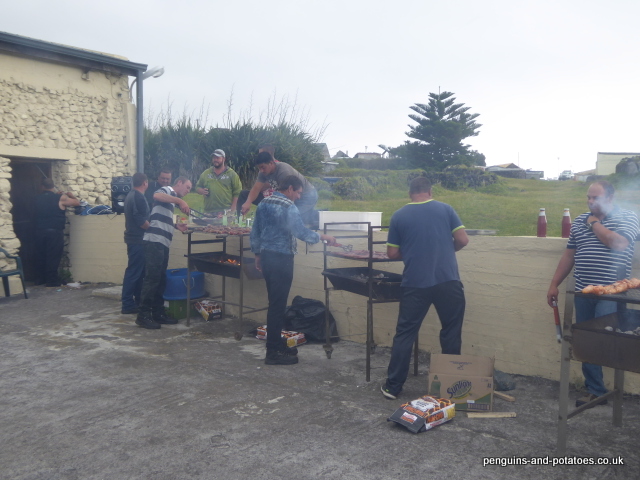
The prize-giving ceremony was the last event of the day, with Administrator Sean Burns giving out a mountain of prizes to all the winners. It was of course a day in which everyone were winners – a fun and relaxing social day that everyone seemed to enjoy.

